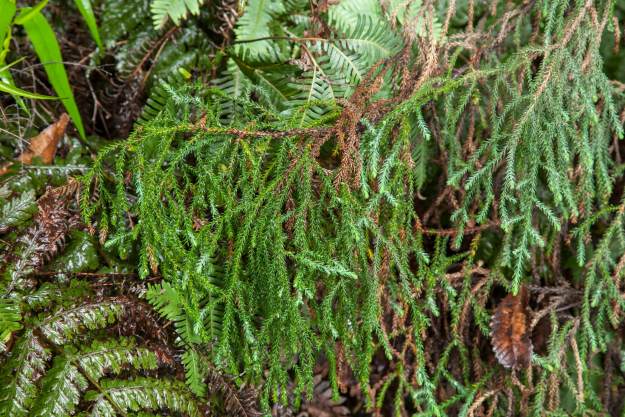
North Hazelbrook Swamp July 2009 photo Lyndal Sullivan
Swampcare is celebrating its 10 year anniversary this year! From the first on ground workday at Kittyhawke Swamp in North Wentworth Falls in March 2007 Swampcare has grown into an annual program of events in the Blue Mountains run by Council’s Bushcare. Swampcare provides opportunities for volunteers to learn about swamps and the special requirements of undertaking bush regeneration in these sensitive places as well as making hands on contributions to protecting them.
Many workshops have been held over the years to add to the knowledge of volunteers covering swamp ecology, vegetation, threatened species and techniques to rehydrate swamps. A Swamp Symposium will be held on Wednesday 21st June to celebrate and continue developing community knowledge, thanks to people such as Dr Ian Baird, who has very generously given his time and shared his knowledge by regularly presenting workshops.
Over the 10 years more than 2000 volunteer hours have been contributed in on site works. Many thanks must also go to Hominy Bakery in Katoomba who have been donating delicious lunches and morning teas for volunteers at every event since 2007. A much appreciated incentive to keep coming back!

March 2007 Kittyhawke volunteers at the first Swampcare event learning the ropes. Photo by Michael Hensen
Sites currently worked by volunteers in the Swampcare events program are:
- Rocklea St Swamp, North Hazelbrook;
- West Kitty Hawke Swamp, Wentworth Falls;
- Clydebank Swamp North Leura;
- Valley View Swamp, Blackheath.
In addition to the Swampcare events program, there are 15 other Bushcare or Landcare groups which also work in swamps and/or their buffers at some stage during each year.
There are 2253 hectares of swamp mapped in the Blue Mountains with 929 of those outside the National Park. Swamps within the urban area are recognised as being the most vulnerable to degradation, a concern which is being addressed by this program.
According to recent recorded history, scientific and management interest began in swamps in 1974 with the PhD by WN Holland entitled ‘Origin and Development of Hanging Valleys in the Blue Mountains, NSW’; which showed the significance of the geomorphology on formation and maintenance of hanging swamps.
In 1988, ecologists DA Keith & D H Benson described and mapped ‘Blue Mountains Sedge Swamps’ and other upland swamps, as part of a larger study. In 1991 the Blue Mountains City Council recognised swamps as an ‘environmentally sensitive vegetation community’ in Local Environment Plan 1991 (LEP 91).
After witnessing a number of destructive developments occurring within and around swamps, in 1999 community members, under the banner of the Blue Mountains Conservation Society, began working to gain legal protection for swamps.
In September 2007, after 8 years of hard work, Blue Mountains Swamps were listed as a Vulnerable Ecological Community under the NSW Threatened Species Conservation Act (TSC Act). In order to achieve this, 3 other significant achievements were made:
- The listing of Temperate Highland Peat Swamps on Sandstone as an Endangered Ecological Community under the Commonwealth EPBC Act in 2005 (which included Blue Mountains Swamps), and
- An amendment to the NSW TSC Act to make provision for Vulnerable Ecological Communities (2002),
- An increase in community awareness and support for swamps.
For a more detailed history and swamp images see http://bluemountains.org.au/swamps.shtml
Since the listing in 2005, Blue Mountains City Council has obtained over a million dollars in grants from state and federal agencies to protect the swamps. BMCC’s ongoing Save our Swamps program is currently partnered with Central Tablelands Local Land Services to deliver a 10 year $750,000 “Swamped by Threats” grant. This aims to continue protecting the swamps of the Blue Mountains and Newnes Plateau with a focus on swamps that are known habitat for the endangered Blue Mountains Water Skink and the Giant Dragonfly.
Swampcare is a vital component of the concerted effort by BMCC and the Blue Mountains community to protect its valuable swamp systems. Our swamps continue to need all this community support – hands on swamp restoration work, watching and reporting illegal activity, writing submissions on potentially damaging developments, and campaigning to strengthen legal protections and ‘buy back’ swamps.
New members are always welcome to join the Swampcare program, just contact the Bushcare office on 4780 5623!

April 2007: Hard at it in Kittyhawke Swamp, Wentworth Falls. Photo by Michael Hensen


















